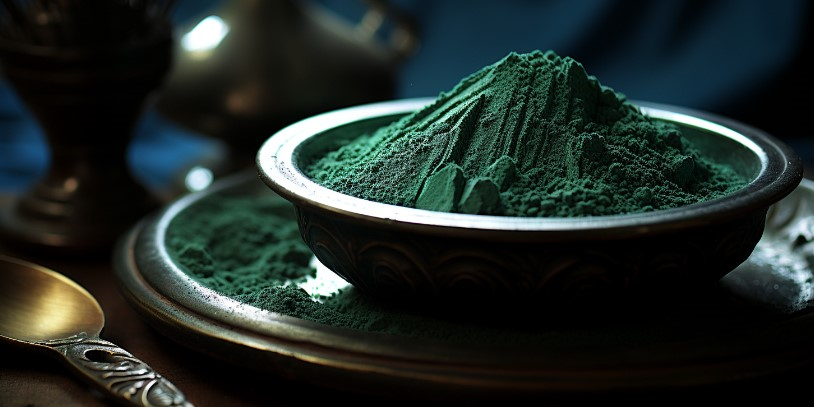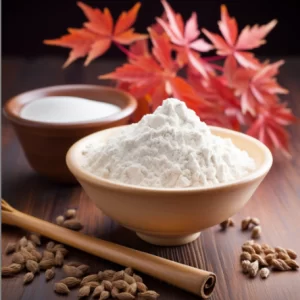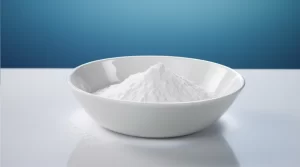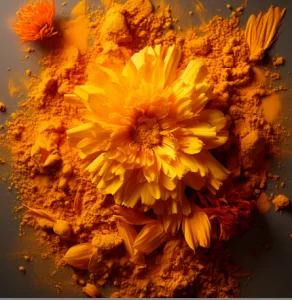Pengetahuan ilmiah tentang spirulina

Apa itu Bubuk spirulina?
Spirulina (scientific name :Spirulina), belongs to cyanophyta, cyanophyta, vibratidae, Spirulina, is an ancient lower prokaryotic single-cell or multicellular aquatic plant, body length 200-500μm, width 5-10μm. Shaped like clockwork, spiral blue-green, so also known as blue-green algae. It is native to alkaline lakes in tropical regions of Mexico and Chad in central Africa and has long been eaten by local people.
Spirulina is suitable for high temperature alkaline environment. More than 35 species have been found, growing in both fresh and salt water, while only 2 species are used in production in the world, Spirulina blunt and Spirulina giant.
Spirulina is one of the large-scale industrial production of microalgae, is a rare algae organism with a life history of 3.5 billion years, and is also a natural food. Spirulina is the most nutritious and comprehensive organism in nature. It is rich in high-quality protein, gamma-linolenic acid fatty acids, carotenoids, vitamins, and a variety of trace elements such as iron, iodine, selenium, zinc and so on.
Bubuk spirulina Morphological characteristics
Multicellular alga, cylindrical spiral filaments, solitary or clustered, filaments 5-10μm in diameter, apex blunt, spiral number 2-7. The algal body can vibrate and rotate, often rotating rapidly as if around a vertical axis, crawling forward. Cell content is uniform, no true nucleus. The algal body is an unbranched filamentous body composed of a single row of cells, with no or only a very thin colloid sheath, and has a regular spiral shape to form algal reproductive segments. Undifferentiated cell and posterior wall spore. Due to the different amounts of phycocyanin and phycocyanin in the body, it presents different body colors, such as blue-green, yellow-green or purple red. And has a delicate transverse septum. It is a simple reproduction method of prokaryotes, which can be directly divided.
Bubuk spirulina distribution
It grows in all kinds of fresh water and sea water, often floating in the middle and low tide waters or attached to other algae and attachments to form a turquoise coating. The four major lakes in the world that naturally grow spirulina are Tchad Lake in Africa, TexcocoLake Lake in Mexico, Chenghai Lake in Lijiang, Yunnan Province, China, and Hamatai Lake in Ordos. It has been artificially cultivated and large-scale mechanized production.
Spirulina powder Growing environment
The optimum growth temperature of spirulina is 35-37℃, which has good heat resistance. The optimal growth pH range is 3-11.0, and when the pH is higher than 11.0, it will not be conducive to growth. In the case of normal nutrition and temperature, light has become an important factor affecting the growth of spirulina, in outdoor culture, the light source is mainly the sun; In the experiment, cold white light source is generally used, and the light intensity required for growth culture is about 3700-4000 lx, and it is about 1100 lx during maintenance culture. The growth of spirulina is not only affected by the intensity of light, but also varies with the color value of light.
Spirulina powder Chemical composition
Contains protein (60%), mainly composed of isoleucine, leucine, lysine, methionine, phenylalanine, threonine, tryptophane, valine and other components. In addition, it contains fats, carbohydrates, chlorophyll, carotenoids, phycocyanins, vitamins (vitamin A, B1, B2, B6, B12, E), nicotinic acid, creatine, gamma-linolenic acid, calcium pantothenate, folic acid and calcium, iron, zinc, magnesium, etc.
Spirulina powder Cultivation technique
Spirulina powder Select and breed algae
The selection and breeding of high quality and high yield algae is an important link in the process of culture. In the process of culture, the algae should be domesticated and rejuvenated to prevent its degeneration and variation.
Spirulina powder Preparation medium
B’s culture-medium is widely used at home and abroad, mainly composed of NaHCO3, NaNO3, NaCl, K2SO4, KH2PO4, FeSO4·7H4O
Isosaline composition. When designing the formula of the medium, it is necessary to make its pH and nutritional status as close as possible to the condition of the culture medium of the algae seed pool, so that the algae can quickly enter the normal growth state after inoculation. In the process of culture and harvest, new medium should be added according to temperature, light intensity, Ph and morphological characteristics of algae. The Ph of the medium is generally around 9.
Stepwise expansion culture
Generally divided into algae seed culture, expansion culture, inoculation, large pool culture. The amount of inoculation is generally appropriate to algal liquid OD(that is, the optical density of algal liquid, which is used to represent the concentration of algal body) at about 0.1. Under appropriate climatic conditions, after 4-5 days of culture, its brightness reaches 0.8-1.0, and it can be harvested.
Algal pond management
The management of large pool culture is an important guarantee of stable and high yield. The main content of management is to measure and record the temperature, water temperature, pH, OD value, remove debris, timing switch agitator. A stirrer is generally required in the algae pond and the large pond. Stirring can not only make the distribution of nutrients in the algal pond uniform, avoid the light damage and light hunger caused by the uneven light, but also eliminate excessive O2 and reduce the photosynthetic inhibition caused by oxygen saturation. Pay attention to control the PH at about 10, the method is to increase NaHCO3, add or replace fresh culture medium, increase the supply of CO2, etc. Pay attention to the control of temperature, the optimal culture temperature is 25-35℃.
Spirulina powder Primary value Health efficacy
Lower cholesterol
Cholesterol reduction can effectively prevent the attack of heart disease and stroke. Y-linolenic acid in spirulina can reduce the cholesterol contained in the human body, which can effectively reduce high blood pressure and prevent heart disease to reduce cholesterol.
Regulate blood sugar
Spirulina contains spirulina polysaccharides, magnesium, chromium and other hypoglycemic substances, which can regulate blood glucose metabolism through various ways (such as promoting insulin secretion, slowing down sugar absorption, promoting substance metabolism, antioxidant, etc.).
Boost immune system
Because the algal polysaccharide and phycocyanin in spirulina can enhance the proliferation of bone marrow cells, promote the growth of immune organs such as thus and spleen, and promote the biosynthesis of serum protein, spirulina has an immune-enhancing effect.
Protect the stomach
Most of the patients with stomach diseases are excessive stomach acid, resulting in gastritis, gastric ulcer and other diseases, and spirulina is alkaline food, spirulina contains high plant protein and rich chlorophyll, beta-carotene, etc. These nutrients are very effective for stomach acid neutralization and gastrointestinal mucosal repair, regeneration and normal secretion function, especially for gastrointestinal patients. Through the good improvement of intestinal environment, it also has the significance of adjuvant treatment for patients with diabetes. Spirulina can improve the emergency ability, and has a certain prevention and protection effect on diabetes, hypertension, fatty liver and kidney damage.
Anti-tumor, anti-cancer and anti-cancer
The mechanism of action of anti-mutation and anti-cancer drugs is related to the repair of deoxyribonucleic acid (DNA), and the algal polysaccharide, β-carotene and phycocyanin in spirulina all have this effect, so spirulina has shown an important role in anti-tumor and anti-cancer.
Prevent and cure hyperlipidemia
Spirulina contains a large number of unsaturated fatty acids, of which linoleic acid and linolenic acid account for 45% of the total fatty acids, both of which are important components of phospholipids in cell membrane mitochondria, which can prevent the accumulation of total cholesterol and triglycerides in the liver and blood vessels, and avoid damaging the normal physiological function of cardiovascular disease.
Anti-oxidation, anti-aging, anti-fatigue
Free radicals are one of the root causes of human aging and diseases, and superoxide dismutase (SOD) can catalyze the dismutation reaction to remove free radicals. Spirulina can reduce the oxygen free radical damage caused by exercise, protect the structure of cell membrane, and have the effect of anti-exercise fatigue.
Radiation resistance
Spirulina polysaccharides can resist radiation. The mechanism of radiation resistance of spirulina is related to the following factors:
(1) Spirulina contains a large number of phycocyanin and algal polysaccharide, rich in protein and a variety of vitamins (vitamin C and vitamin E, etc.), beta-carotene and trace elements (selenium, zinc and iron, etc.) and other biological active ingredients, increase the body’s immune function, alleviate and reduce the suppression of the immune system by rays.
(2) Spirulina has a strong antioxidant effect, which can enhance the activity of antioxidant enzymes in the body and trap free radicals, thereby reducing the DNA damage caused by the formation of radiation-induced free radicals.
(3) Spirulina is rich in iron, vitamin B12 dan klorofil, which promote hematopoietic function, relieve and reduce the inhibition of radiation on bone marrow hematopoietic function.
Cure anemia
Iron deficiency anemia is a very common phenomenon, and spirulina contains extremely rich iron and chlorophyll, these nutrients can effectively improve the condition of human anemia. Spirulina is rich in active iron, vitamin B12 and chlorophyll, which are raw materials and coenzymes for the synthesis of hemoglobin, and phycocyanin and algal polysaccharide in spirulina can enhance the ratio of polychromic red blood cells and orthochromic red blood cells in mouse bone marrow, so spirulina can promote hemoglobin synthesis and bone marrow hematopoietic function from many aspects, and play an anti-anemia role.
Spirulina powder Plant culture
Edible history
The earliest use of spirulina as food was by the Aztecs of Mexico in the 16th century, who harvested it from Lake Descoco and sold it as pancakes. The Aztecs called it super brittle Tratel,” which means the excrement of the stone. Spirulina was discovered by a French scientist in the 1960s, but he never ate it as a food. The first large-scale machine for producing spirulina was built in Mexico in the 1970s. The consumption of spirulina in Chad dates back to the 9th century in the Kanem-Bornu Empire. At that time, spirulina was harvested from Lake Chad.
History of discovery
In the early 1960s, when the French explorer Dr. Clement was exploring Africa, he found that the Ghanim people on the edge of Lake Chad were still strong, energetic, healthy and long lived under the conditions of animal protein deficiency and even food and vegetables. The investigation found that they often collect spirulina floating on Lake Chad to dry for food and treatment.
Nutrient composition
Spirulina nutrition is characterized by high protein content, low fat, fiber content, and also contains a wide variety of vitamins, it is the highest content of vitamin B12 and beta-carotene food. In addition, it is also the highest absorbable iron content in all foods, and it is also found to contain algal proteins with cancer prevention and cancer treatment, as well as a large number of other mineral elements and bioactive substances that improve the body’s immunity.
Polysaccharide of Spirulina alga is the main form of carbohydrate in spirulina alga, the content of which is up to 14%~16% of dry weight. The lipids contained in spirulina are almost all important unsaturated fatty acids, and the cholesterol content is very small. The protein content of dried spirulina powder is as high as 60 to 72 percent, which is 1.7 times that of soybeans, 6 times that of wheat, 9.3 times that of corn, 3.1 times that of chicken, 3.5 times that of beef, 3.7 times that of fish, 7 times that of pork, 4.6 times that of eggs, and 2.9 times that of whole milk powder. Spirulina is rich in vitamins B1, vitamins B2, vitamins B3, vitamins B6, vitamins B12 and vitamin E. It can be said that it fully concentrates the various vitamins that the human body needs most. Spirulina is also a natural treasure house of chlorophyll, accounting for 1.1% of the algae body, which is 2 to 3 times that of most land plants and 10 times that of ordinary vegetables. The type of chlorophyll contained in spirulina is mainly chlorophyll a, the molecular structure is very similar to human heme, is the direct raw material for human synthesis of hemoglobin, called “green blood”, and the content is as high as 7600mg/kg algae powder. Spirulina contains all the essential amino acids of the human body, the content of lysine is as high as 4% to 4.8%, which is closest to the recommended standard of the Food and Agriculture Organization of the United Nations compared with animal and plant food, and the balanced composition of the human body is particularly high in absorption and utilization. Spirulina is rich in minerals needed by the human body, calcium, phosphorus, magnesium, iron, sodium, manganese, zinc, potassium, chlorine, etc. account for about 9% of the total minerals in the algae. The iron content is 20 times that of ordinary iron-containing foods; It has 10 times more calcium than milk. These minerals contained in spirulina are alkali metal elements within the range of cell biology, and do not produce any side effects on human cells and tissues and organs.
Spirulina powder Manufacturer /Spirulina powder Manufacturers/ Spirulina powder Supplier /Spirulina powder Suppliers/Spirulina powder Factory:www.backvita.com Email: [email protected] Phone: +86 (029) 8187 2325



